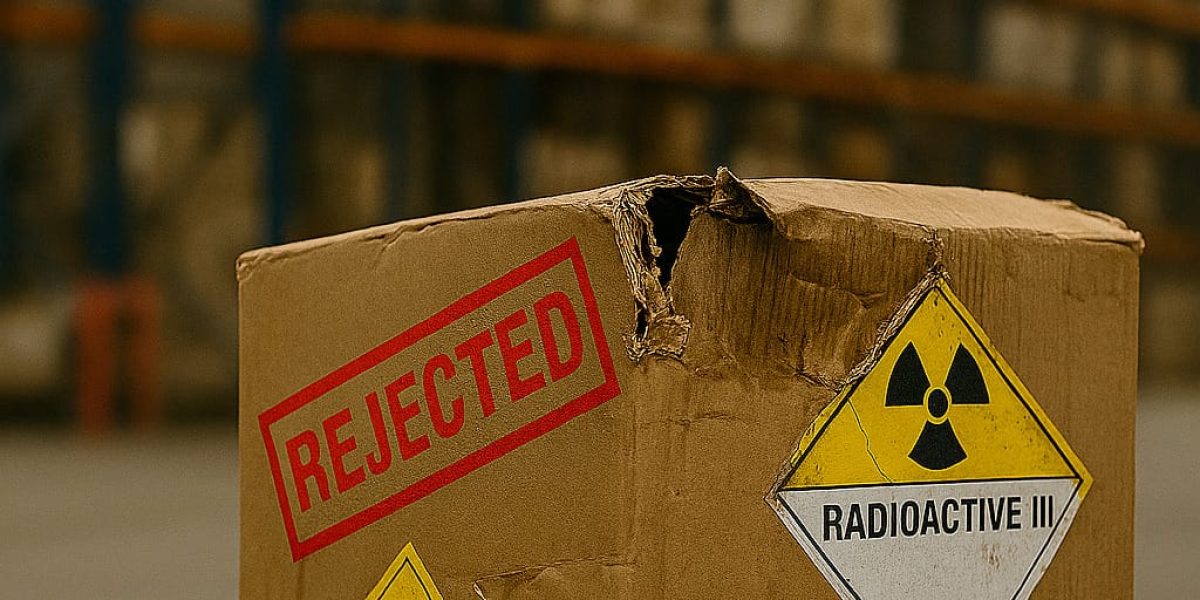Mistakes Made During the Transport of Radioactive Materials
The transport of radioactive materials is governed by a trio of international rulebooks:- ICAO Technical Instructions – the legal standard for every country that is part of the Chicago Convention.
- IAEA Safety Standards – science‑based safety guidance from the International Atomic Energy Agency.
- IATA Dangerous Goods Regulations (DGR) – a user‑friendly reference book that airlines use to apply the ICAO rules day‑to‑day.
1. Misclassifying Radioactive Materials
Many shippers assume their product is “not really radioactive” and ship it as general cargo. To decide if something is regulated, ICAO points to Section 10.3.2 of the DGR. In plain language, this section asks two questions:- How much activity is in each gram of material?
- How much total activity is in the whole package?
2. Selecting the Wrong Package Type
Radioactive packages come in graduated safety levels:- Excepted or Industrial – very small or naturally low‑risk items.
- Type A – medium activity, will not cause severe injury if the package leaks.
- Type B(U) or B(M) – high activity or fissile materials where leakage could be serious.
3. Missing or Improper Labels and Markings
Labels are the first thing a ground handler sees. Two identical Class 7 labels must be placed on opposite sides, showing:- UN number and proper shipping name
- Radiation trefoil symbol
- Transport Index (TI) – a single number that tells handlers how far to keep the package from people and other cargo.
4. Shipper’s Declaration Errors
The Shipper’s Declaration is a legal affidavit. Leaving out the special‑form certificate number, quoting the wrong activity, or copying the UN number from an old template will all stop your shipment. We provide an annotated declaration and a fill‑in PDF that mirrors ICAO wording exactly.5. Neglecting Transport Index (TI) Calculations
The TI is calculated by measuring the radiation level one metre from the surface and then converting the units:- mSv/h → multiply by 100
- µSv/h → divide by 10

